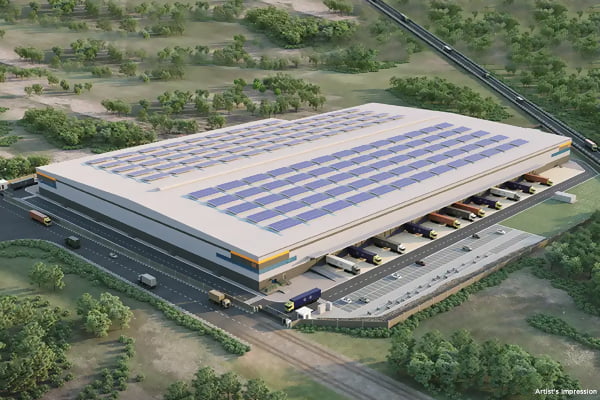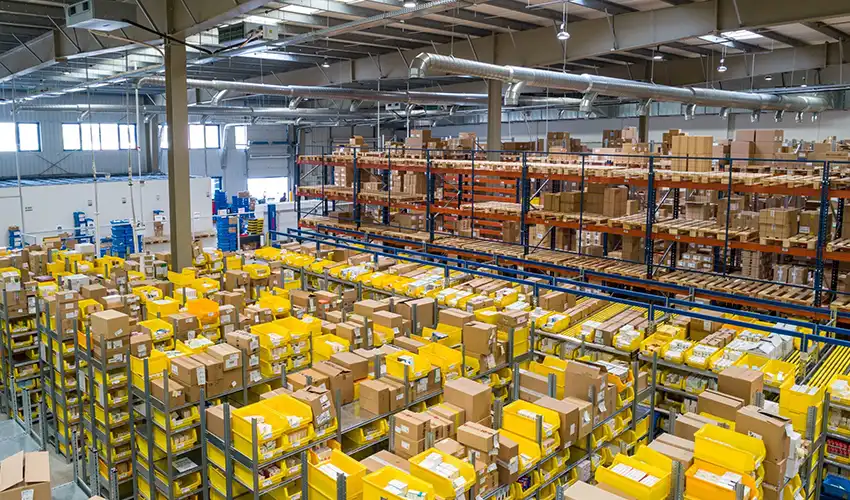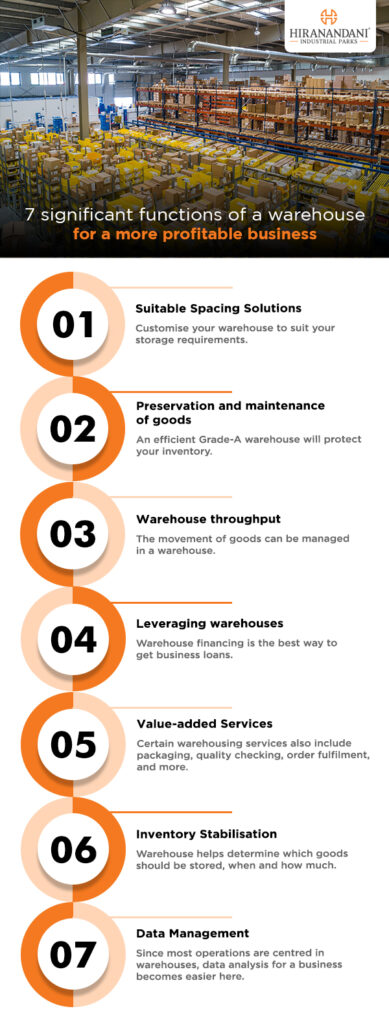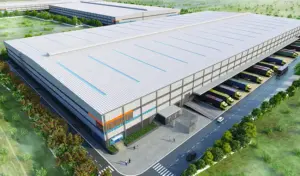Warehousing has evolved through many phases and is now a necessity for any business. E-Commerce, FMCG, FMCD, EV manufacturing, 3PL, and many more industries rely heavily on a warehouse. This bare shell was only used as a spare space to store raw materials. However, with further technological advancements and automation, a warehouse now serves the purpose of storage, logistics, inventory management, data analysis, and much more.
Hence, a warehousing company in India will help scale your business, provide a sustainable environment for your business to thrive, and minimise the operational and financial risks involved. Let us explore the different functions of warehouse.
Suitable Spacing Solutions
Storage is the primary warehouse functions where the spaces accommodate high-volume inventory. This helps large-scale businesses to store raw materials, stocks, perishable goods, heavy inventories and more.
These warehouses are designed to optimise storage with vertical & horizontal spaces. A pallet racking system in such warehouses allows maximum inventory to be stored.
Warehouses can also store items with lesser shelf life with cold storage facilities. Built-to-suit warehouses can customise your storage solutions as per your business requirements.
Preservation and maintenance of goods
Goods are susceptible to damage or risks due to weather, pests, and lack of security. A warehouse provides a safe, dry, and secure environment for storing goods.
Another way that warehouse goods are maintained is by keeping them organised and easily accessible. This allows for quicker inventory turnover and less chance of damage due to improper handling. Hiranandani Industrial Parks offers a flood-proof mechanism for the warehousing in Chennai that is prone to heavy annual rains.
Warehouse throughput
Apart from storage & management, industrial warehousing services are now considered the nucleus of all business operations. From the moment the order is received to picking-&-packing to dispatching, the throughput of the inventory depends on how efficient the warehouse is. The movement of goods consists of the following activities–
- Docking of goods and organising them in the inbound area.
- Transferring these goods to the storage area. Arranging them according to SKUs (stock-keeping units) so that it becomes easier to categorise the stock.
- To ensure expedited services, warehouse management helps pick orders with a proper system in place. WMS(warehouse management software) plays a crucial role in inventory tracking, keeping a record of the amount of particular stock available, and determining any waste inventory left.
- Finally, the supply chain starts by loading the goods from the warehouse. This is called– Outbound Activity.
To ensure that all these operations are conducted promptly, choosing a warehouse with Grade-A infrastructure is imperative.
Hiranandani Industrial Parks offers built-to-suit warehouses with optimum floor plates that help you navigate your operations and strategize the space for maximum utilisation.
Leveraging warehouses
A warehouse is considered a high-value and low-risk asset, which is quite a reliable means of securing loans. When businesses need to expand and stretch their financial budget, they can take loans with the warehouse as collateral. Since firms primarily rent out warehouses, the commodities in storage are considered collaterals.
A ‘Warehouse Keepers’ Warrant’ is a certificate that declares that the owner of these goods can procure loans from the bank even if the warehouse is not owned by the business.
Since most banks levy low-interest rates on such loans, warehouse financing is the best way for businesses to scale. Also, these loans are more secure than others.
Bottom line: the total cost of acquiring business loans with warehouse financing is way lower and considered a healthy investment for leveraging your finances.
Value-added Services
To remain competitive, warehouses must offer value-added services beyond simply storing and shipping products.
- Many warehouses offer order picking, packaging, and assembly services. By providing these services, warehouses can save their clients time and money by taking on tasks that would otherwise need to be completed by the client’s staff.
- In addition to traditional value-added services, some warehouses offer more unique services such as inventory management, barcode scanning, and EDI (electronic data interchange) compatibility. These services help businesses keep track of their inventory and orders in real time, which can result in significant cost savings.
Inventory Stabilisation
A warehouse helps stabilise prices by maintaining a steady supply of goods. This is done by keeping inventory at sufficient levels to meet customer demand.
Depending on the transactions, you can determine which of your products are in high-profit margins and which are outdated.
The inventory levels can also help the entrepreneur to forecast future trends to anticipate changes in demand.
Data Management
Customer satisfaction is at the core of Key performance indicators of a business. The best way to ensure that your customers get their orders precisely and promptly is to manage your inventory data. This includes the highest-lowest volume of inventory transactions, determining seasonal stocks, order tracking for a customer, and how much supply needs to be reloaded from the supplier.
A warehouse enables the entrepreneur to analyse the inventory data, which will further help determine the stocks and estimated profit margins.
Other Function of Warehouse
Risk Bearing: When goods are stored in a warehouse, the responsibility for their safety transfers to the warehouse keeper. This means the warehouse assumes the risk of loss or damage and takes necessary precautions to protect the goods, often including insurance for compensation in case of loss.
Place Utility: Strategic location is another important function of warehouses. They are typically situated in accessible areas close to major transportation hubs like roads, airports, railways, or waterways to facilitate easy movement of goods.
Conclusion
The growth of manufacturing/production industries has led to a high demand for warehouse companies in India. As digitisation & online market overtakes all mediums of consumption, businesses need to be on par with expeditious services. An efficient warehousing infrastructure with a feasible location is a crucial incentive.
Chennai has emerged as one of the top industrial cities owing to the presence of robust infrastructure, seaports, railways and airports. Hence, several large-scale & MSMEs have established their business in this city.
If you are looking for a warehousing facility in Chennai, then Hiranandani Industrial Parks is a suitable option with our built-to-suit spaces and progressive infrastructure. The Red Hills, Chennai location facilitates easy access to multi-modal transport & key consumption zones while providing a secure environment for businesses.
FAQs
Q: What is the role of a warehouse?
A: The warehouse is more than just a storage space. Its multi-functionality acts as a centralised hub for backend operations. As stated above, a warehouse has several benefits, from inventory management to logistics.
Q: What are the 4 essential functions of a warehouse?
A: The essential functions include:
- Storage
- Inventory management
- Packing and shipping
- Analysing inventory and data
Q: What is the key functions of warehouse management?
A: Warehouse management centres around the following–
- Safeguarding your stocks
- Maintaining an inventory record
- Ensuring there is a proper quota of supplies
- Guaranteeing that the customer receives accurate orders.
















